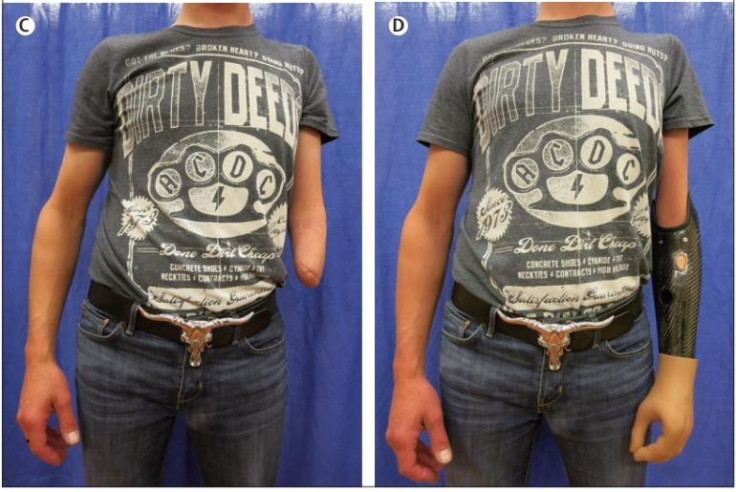Bionic reconstruction: World first mind-controlled robotic hands given to Austrian amputees

Three men in Austria have become the first in the world to be fitted with mind-controlled robotic bionic hands that are based on a new technique known as "bionic reconstruction".
Developed by researchers from the Medical University of Vienna in Austria and the University Medical Center Göttingen in Germany, bionic reconstruction is a technique that combines selective nerve and muscle transfers, elective amputation, and an advanced robotic prosthesis.
Each of the three men had been suffering for many years with very poor hand function due to injuries to the brachial plexus, a network of nerves that send signals from the spine and neck down to the shoulder, arm, forearm and hand.
Brachial plexus injuries often occur as a result of trauma from high speed collisions, especially in motorcycle accidents, and collision sports such as rugby and American football.
Training their brains to use electrical signals
"In effect, brachial plexus avulsion injuries represent an inner amputation, irreversibly separating the hand from neural control. Existing surgical techniques for such injuries are crude and ineffective and result in poor hand function," explained Professor Aszmann, Director of the Christian Doppler Laboratory for Restoration of Extremity Function at the Medical University of Vienna.
So in order to fix the problem, the researchers first put the three men through intensive cognitive training over nine months, where they had to train their brains to use electrical signals to control a virtual hand on a computer screen.
Once they mastered that, they were then moved onto a "hybrid hand" – i.e. a prosthetic hand attached to a device, which was then attached to the poorly-functioning hand.
When the three patients could successfully control the hybrid hand, their poorly functioning hand was then amputated, and the prosthetic hand was connected directly to their arm, attached to their nerves.
The prosthetic hand contains sensors that respond to electrical impulses in the muscles, and as their brains were trained to control the prosthetic limb, within just three months, the men were able to perform everyday tasks such as pouring water, using a key, undoing buttons with two hands, cutting food with a knife and handling objects.
Creating and extracting new neural signals
"The scientific advance here was that we were able to create and extract new neural signals via nerve transfers amplified by muscle transplantation. These signals were then decoded and translated into solid mechatronic hand function," said Aszmann.
"So far, bionic reconstruction has only been done in our centre in Vienna. However, there are no technical or surgical limitations that would prevent this procedure from being done in centres with similar expertise and resources."
Their research, entitled "Bionic reconstruction to restore hand function after brachial plexus injury: a case series of three patients" is detailed in the journal The Lancet.
Professor Simon Kay who carried out the UK's first hand transplant, and Daniel Wilks from Leeds Teaching Hospitals NHS Trust in Leeds, UK, are both hopeful that the bionic reconstruction technique could help to advance prosthetics treatments.
They said in a statement: "The present findings – and others – are encouraging, because this approach provides additional neural inputs into prosthetic systems that otherwise would not exist.
"However, the final verdict will depend on long-term outcomes, which should include assessment of in what circumstances and for what proportion of their day patients wear and use their prostheses.
"Compliance declines with time for all prostheses, and motorised prostheses are heavy, need power, and are often noisy, as well as demanding skilled repair when damaged."
© Copyright IBTimes 2024. All rights reserved.






